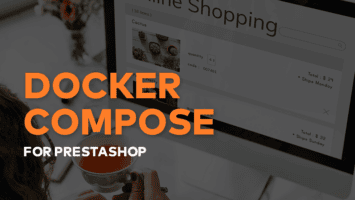Are you looking to start an ecommerce business? Are you planning to build your first ecommerce store and sell online? We’ve been there many times with our clients, it’s never easy, but there are many advantages of such enterprises, which can often either replace or support a traditional brick and mortar business.
See our tips that will allow you to start your own ecommerce business effectively and stand out from other ecommerce companies!
7 tips to get started
What do you really have to know about ecommerce?
By now, the topic of the current reality of ecommerce has already been exhausted. However, we should ask ourselves a question: are we truly capable of effectively using this knowledge in our business model for our own business goals? If you are here, reading this, then you most likely already have an online store that you want to develop. Or perhaps you have a business idea, are just a few steps before establishing a store, and you are currently considering your first moves in the ecommerce business.
The ecommerce industry consists of four main formats dedicated to creation of the structures of online stores:
Open-Source platforms – this is a very broad category that, thanks to easy access to the code, allows for free modification of the online store, thus making it possible to create unique user-oriented solutions or to integrate the store with additional modules (e.g. storage modules). The most popular solution in this category is WordPress + WooCommerce. Currently, over 25% of all online stores in the “entire Internet” use this particular plugin.
SaaS platforms (Software as a Service) – an easily implementable solution recommended for small business owners and medium-sized ecommerce stores that rely on standard solutions. Creating and developing an ecommerce platform in this configuration is mostly limited to the use of modules provided by the developer and working with templates that can be modified only to a limited extent. While in case of Open-Source solutions, WooCommerce is the one that is used most frequently, Shopify holds the undisputed lead position in case of SaaS.
Dedicated platforms – they are tailored to the specific custom requirements of an ecommerce company. Dedicated ecommerce software should be the next step of evolution when working in the ecommerce industry. The decision to implement dedicated ecommerce software should be made while taking into account one’s business plan and, what’s probably even more important, on the basis of experience in working with Open-Source platforms. Awareness of one’s actual business needs combined with an experienced team of developers will make it possible to design and develop the best ecommerce platform, one that will meet all requirements of the store’s owner, and also address the needs and shopping habits of online shoppers. You should keep in mind that aside from the costs related to developing and establishing an online store, there are also costs connected with running and maintaining an already existing one. An intermediate solution between a dedicated ecommerce platform and the use of an already existing product also exists – OXID eShop. OXID eShop – this German enterprise-class ecommerce solution is an advanced framework designed specifically for B2B cooperation. It offers high customization of settings while also providing decent performance even in case of databases with millions of own products.
Out-of-the-Box (OotB) Software – a shop script created by a software development company. It usually has a limited set of functions and is sold as a finished “product”. When using OotB software, the user may encounter errors resulting from insufficient testing. Due to possible difficulties with enhancing its functionality, or due to lack of possibility of doing so in some cases, and becoming overly dependant on the creators of the script, OotB ecommerce software is not exactly attractive and user-friendly.
Enough theory, time for our 7 tips for a good start!
Choose a script that’s well-tested and well-supported.
The online shopping platform that you choose should guarantee stable growth for your ecommerce business, which is why you should find out: how long it is present on the market, how stable its code is and whether it has been tested by specialists. Look up the opinions on the Internet – Sounds easy? And yet, we often forget about this very important step.
Check the availability of plugins / extensions that can enhance the functionality of your online store.
Thanks to a large base of ready-to-use modules you will be able to accelerate the growth of your online store and swiftly react to the needs of clients. All you have to do is purchase, install and configure the modules of your choice.
Carefully plan your Customer Journey Map.
A customer journey map indicates which functions and interactions with external systems will be necessary in the future for the proper functioning of a profitable online store, which will make it easier for you to choose the right engine.
The most common CJM consists of the following steps:
- The potential customers view the product listing / category-limited listing.
- They choose a product from the list and go to its data tab (the subpage of the respective product).
- They add the a product to the cart. The result of the action “Add to cart”: The target customers get redirected to the “Cart” subpage or alternatively – the customer can get redirected directly to the “Checkout” subpage.
- The “Checkout” subpage contains a form with payment options, shipping data, the log-in / registration field.
- The last step is the “Thank You page” that informs the client that the payment processing of their order is in progress.
Most ecommerce platforms use basic Customer Journey Maps like the one shown above. As a matter fact, it became so popular that most users treat it as the most optimal workflow for shopping online. Depending on individual needs, different variations / modifications of this process are possible, e.g. ‘Ajax Add to Cart Button’ or ‘Checkout Wizard’ in several steps (separate screen for the payment step, separate screen for filling out the delivery data, etc.).
Integrate the systems that will improve your work in the future.
The most important thing to keep in mind when starting new ecommerce businesses is that target audience will keep on growing over time, and the “to do” list will keep on getting longer as a result. Thanks to the automation of processes, you can not only improve the comfort of work but, more importantly, avoid errors commonly made during manual execution of tasks. It also enables high level of scalability (it doesn’t matter whether the system will be processing 10 or 1000 orders a day, everything will work with the same level of efficiency).
Examples of automation:
- The system connects to the database (API) of your providers on a daily basis to update the state of inventory. The sold-out products are automatically removed from the listings and replaced with new ones, that were just introduced.
- After order placement and payment processing, the service providers send out notifications that the payment was successful, the order status gets automatically updated to “Payment received”, and the system then prints out the required shipping labels.
- Clients who are interested in receiving the newsletter can be automatically added to the subscriber list of the mailing system (MailChimp, GetResponse, FreshMail or Sare). And they can opt out from the subscribing list with a single click. Sensitive data is safely stored on the server of the newsletter service provider.
- The after sales service runs under a CRM system integrated with the online store. The order history and the message box can be viewed in one place.
Choose the right ecommerce platform, one that you actually need in your online business.
There are currently two popular solutions dominating the e-commerce market: WooCommerce and Shopify. Before choosing one, it would be wise to learn the differences between them to maximize the advantages for your specific ecommerce brand.
WooCommerce – with this ecommerce platform you can quickly prepare and start your Internet-related activities, sell products, and facilitate the development of your own ecommerce store by implementing new functionalities and integrating it with external systems. Just keep in mind that modifying the code or adding new plugins without sufficient knowledge in the area of programming and without adequate support may produce unexpected and undesirable results. Your ecommerce store might end up functioning in a suboptimal manner, and rather than supporting your business strategy, the platform might end up becoming its weakest point.
- multi-level modification possibilities: access to the full code of the application (back-end / front-end). This allows for free modification of the code of the online store (via hooks, filters or API endpoints).
- good accessibility: The WooCommerce script is 100% free and open-source. Its popularity makes it easy to find help with configuration or installation of new modules.
- easy development of ecommerce businesses: due to the high popularity of the script, the market is full of plugins which can provide the platform with additional functionalities. However, keep in mind that using too many plugins might cause the online store to run slowly, which in turn could have a negative effect on TTFB (Time to First Byte). In some cases, using a plugin is not even necessary, and all it takes is to add a few lines of code in the shops’ theme to achieve the desired result.
- support of SEO (Search Engine Optimization) – holding a high position in the Google search engine is one of the key factors affecting the online sales of ecommerce stores. WooCommerce is fully compatible with WordPress CMS. By configuring a WordPress SEO plugin (e.g. YOAST), you can make your shop even more ‘SEO ready’.
Shopify
- compliance with international standards For all users who are planning to reach global ecommerce sales, Shopify can guarantee full compliance with international standards and integration under multi-level system configuration.
- intuitive administration panel All users who wish to launch and configure their online shopping platform on their own can do this easily with the Shopify admin panel. However, everyone who decides to choose this solution should accept the fact that they won’t be able to perform any advanced customization of the store.
- a lot of JavaScript code. As Shopify does not provide its users access to the back-end code, all plugins typically use the JS code to “integrate” with Shopify. What does this mean in practice? It may happen that Shopify Theme or Shopify App uses JavaScript in a not very optimal manner, which could have a negative effect on TTI (Time to Interactive), i.e. the online store might get a low Page Speed Insights (PSI) score, and be perceived as “sluggish” by users visiting it as result.
Don’t forget about Conversion Rate
Conversion Rate (CR) is the percentage of users who perform a certain desired action, e.g. place an order. The average CR is usually 1% to 3% (meaning, among a group of 100 users, 1 to 3 users place an order in the ecommerce store). In order to increase the CR of your own online store, and – for example – start selling more, the following actions are recommended for ecommerce websites:
- Optimization of the page load speed (especially for mobile devices)
- Improved usability of the ecommerce site (better navigation tools, search engines and result filters)
- Higher quality of photos, more detailed descriptions
- Building trust with clients: display genuine product reviews made by users, use the so-called social proof widgets
- Optimization of Google AdWords / Facebook Pixel campaigns
- Use of ‘Live Chat’ widgets that will redirect the user to a live quick response customer support
- Monitoring the habits of users visiting the ecommerce website (heatmap analysis, use of hotjar tracking code)
If you are not a programmer, do not pretend to be one ?
Visit some message boards, read opinions, view some portfolios, and only then decide who should take care of your ecommerce business.
See what else is important to make your eCommerce thrive.



















